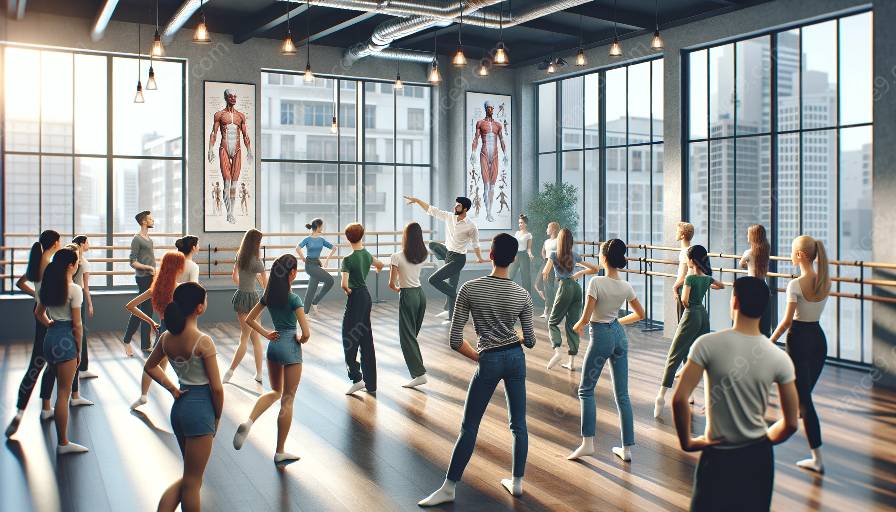Dance Teaching Methodologies
Dance teaching methodologies encompass a wide range of techniques and approaches used to educate and train dancers. These methodologies are designed to develop the technical, artistic, and performance skills of dancers while emphasizing creativity, expression, and physicality. Incorporating a variety of teaching methods, including traditional techniques, interdisciplinary approaches, and contemporary pedagogies, dance educators aim to foster a comprehensive understanding of the art form.
Traditional Techniques
Traditional dance teaching methodologies often draw from established dance forms such as ballet, modern, and jazz. These techniques focus on building a strong foundation in movement vocabulary, alignment, and musicality. Through structured exercises and repetition, dancers develop a solid understanding of technical principles and enhance their physical capabilities, preparing them for a successful performance career.
Interdisciplinary Approaches
Incorporating interdisciplinary approaches into dance education allows students to explore a diverse range of movement styles, cultural influences, and expressive forms. By integrating elements of contemporary dance, cultural dance forms, and somatic practices, educators encourage dancers to expand their artistic horizons, cultivate versatility, and develop a deeper connection to the creative process.
Contemporary Pedagogies
Contemporary dance teaching methodologies embrace innovative and progressive strategies that challenge traditional notions of movement, performance, and choreography. By fostering a spirit of exploration, experimentation, and collaboration, educators empower dancers to push the boundaries of their artistic expression, engage in critical dialogue, and adapt to the evolving landscape of dance.
Dance Education and Training
Dance education and training form the cornerstone of a dancer’s journey, providing a structured foundation for the development of technical proficiency, artistic sensibility, and performance skills. With a focus on holistic growth, dance education fosters intellectual curiosity, physical discipline, and emotional intelligence, preparing dancers to meet the demands of a dynamic and competitive industry.
Technical Proficiency
Technical proficiency in dance is cultivated through rigorous training in movement dynamics, spatial awareness, and kinesthetic awareness. By emphasizing proper alignment, muscle control, and coordination, dance education instills a deep understanding of the body as an instrument of expression, empowering dancers to execute complex movement sequences with precision and clarity.
Artistic Sensibility
Developing an artistic sensibility is integral to the growth of dancers as expressive artists. Through exposure to diverse choreographic styles, improvisational exercises, and collaborative processes, dance education nurtures creativity, emotional depth, and individuality, enabling dancers to communicate compelling narratives and evoke authentic emotional responses through their performances.
Performance Skills
The cultivation of performance skills in dance education encompasses a multifaceted approach to stage presence, projection, and audience engagement. Educators guide dancers in honing their ability to command the performance space, convey intention with clarity, and connect with audiences on a visceral level, fostering a dynamic and impactful stage presence.
Enhancing Performance Skills
Enhancing performance skills in dance education requires a comprehensive approach that integrates technical, artistic, and psychological elements. Through the implementation of innovative methodologies and advanced training techniques, educators can equip dancers with the tools and mindset needed to excel in the professional realm.
Integrated Training Methods
Integrated training methods blend physical conditioning, mental focus, and artistic exploration to create a balanced and well-rounded approach to performance skill development. By incorporating elements of strength and flexibility training, somatic practices, and performance psychology, dancers acquire the physical and mental resilience necessary to meet the demands of high-stakes performance environments.
Mentorship and Artistic Guidance
Mentorship and artistic guidance play a pivotal role in nurturing the performance skills of dancers, offering personalized support, constructive feedback, and tailored mentorship that addresses the unique needs and aspirations of each student. Through mentorship, dancers receive invaluable insights, encouragement, and inspiration, propelling their growth as performers and igniting their passion for artistic excellence.
Collaborative Performance Projects
Participation in collaborative performance projects provides dancers with opportunities to apply their skills in a professional context, engage in creative exchange, and refine their performance abilities through practical experience. Collaborative initiatives such as choreographic showcases, interdisciplinary collaborations, and community outreach projects offer a platform for dancers to showcase their talents, expand their artistic networks, and gain exposure to diverse performance settings.
Conclusion
By delving into the intricacies of dance teaching methodologies and exploring the crucial role of performance skills in dance education, one can gain a deeper appreciation for the multifaceted nature of dance pedagogy. With a rich tapestry of traditional techniques, interdisciplinary explorations, and contemporary pedagogies, coupled with a comprehensive approach to dance education and training, dancers are equipped to thrive in a dynamic and evolving landscape of artistic expression and performance.















